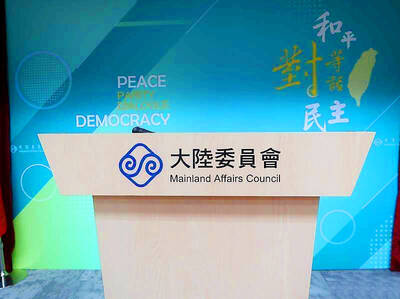In 2002, after the dot-com bubble burst, most people were trying hard to forget the preceding years of seemingly irrational entrepreneurial exuberance. But not David Kirsch.
Kirsch, a professor of strategy and entrepreneurship at the University of Maryland, has seen a way to ensure that the next generation of entrepreneurs can avoid the problems of the dot-com bubble, or “at least make new mistakes”: Document what did and didn’t work during the flurry of business activity around the new technology called the Internet.
In June of 2002, he started the Digital Archive of the Birth of the Dot Com Era, usually called the Dot Com Archive (dotcomarchive.org). Shortly thereafter, a partner of a venture capital firm that was closing its doors donated every business plan that the firm had received from 1999 to 2002 — documents covering some 1,100 companies.

PHOTO: NY TIMES NEWS SERVICE
Today, Kirsch says, the archive contains some 6.4 million e-mail messages, memos, slide presentations, photographs, marketing materials and databases representing thousands of companies. These data have begun to reveal interesting insights into the dot-com bubble.
Azi Gera, a doctoral candidate who works with Kirsch, used the archive to reveal the key role that social networks play in venture capital financing. Looking at a data set of 1,018 companies, Gera determined that not a single entrepreneur received venture capital funding by submitting a business plan “over the transom.” By contrast, about 5 percent of entrepreneurs who knew the venture capitalist or gained a personal introduction received funding.
Asked what his finding meant for today’s entrepreneurs, Gera says, “In this economy, the social network will be even more necessary.”
Another striking finding is the high percentage of dot-com businesses that survived the shakeout. Kirsch, along with Brent Goldfarb, a colleague at Maryland, and David Miller of the University of California, San Diego, have found that 48 percent of dot-com companies founded since 1996 were still around in late 2004, more than four years after the NASDAQ’s peak in March 2000.
Kirsch says that most people are stunned by this figure; they tend to guess that about 90 percent of companies failed. He adds that the dot-com survival rate is as good as or better than that for technologies like automobiles, tires and televisions in their formative years.
Many of the companies that survived the dot-com bust did so by ignoring the prevailing “Get Big Fast” business model, Kirsch says. Get Big Fast said that an Internet company should identify a market early and grow as quickly as possible, to shut out all competitors.
Instead, many survivors pursued what Kirsch calls “micro niches”: markets that didn’t offer hundreds of millions in quick profits, but still presented viable Internet-based business opportunities.
WrestlingGear.com, a company that was started in 1998 to sell amateur wrestling equipment to high school students, is a case in point. “It wasn’t rocket science,” says Jeffrey Pape, the company’s founder and president. “One of our focuses when we started was that we had to make money on every transaction. We paid attention to our margins. It was pretty basic.”
He says the company, which is privately held, now has about US$1.4 million in annual sales.
For Marco Rubin, principal of Exoventure Associates, a consulting firm based in Falls Church, Virginia, stories about individual companies are less valuable than the patterns that emerge from the collected data of many businesses. Drawing on data from the archive, conversations with venture capitalists, and a grant from the National Science Foundation, Rubin is building a software tool that he hopes will help early-stage entrepreneurs “avoid known failure patterns.” He is also developing a simulation environment in which entrepreneurs can, as he puts it, “screw up in private” before bringing their ideas to potential investors.
At the archive, Kirsch and Goldfarb have built a database of information on 951 companies that Kirsch says are statistically representative of businesses in the dot-com era; the database does not reveal company or employee names. It includes each company’s location, a brief summary of the proposed business and outcome, and some details about key employees: their ages, educational and work experience, and their personal and professional connections to one another.
Rubin of Exoventure says this information “goes a long way toward taking the voodoo and mysticism out” of the startup process.
For its first five years, the collection of business plans in the Dot Com Archive was easily accessible via the Web, and more than 87,000 people registered to use it. Most of these people were looking for model business plans.
Statistical analysis is undeniably valuable. But a database entry cannot capture the nuances of individual stories that may be instructive for a future entrepreneur. Recognizing this, the Dot Com Archive also collects personal narratives. These may be particularly valuable because they include the experiences of not only successful companies but also of unfunded and failed ones. This offers the opportunity to turn on its head the maxim that “history is written by the winners.”

MORE VISITORS: The Tourism Administration said that it is seeing positive prospects in its efforts to expand the tourism market in North America and Europe Taiwan has been ranked as the cheapest place in the world to travel to this year, based on a list recommended by NerdWallet. The San Francisco-based personal finance company said that Taiwan topped the list of 16 nations it chose for budget travelers because US tourists do not need visas and travelers can easily have a good meal for less than US$10. A bus ride in Taipei costs just under US$0.50, while subway rides start at US$0.60, the firm said, adding that public transportation in Taiwan is easy to navigate. The firm also called Taiwan a “food lover’s paradise,” citing inexpensive breakfast stalls

TRADE: A mandatory declaration of origin for manufactured goods bound for the US is to take effect on May 7 to block China from exploiting Taiwan’s trade channels All products manufactured in Taiwan and exported to the US must include a signed declaration of origin starting on May 7, the Bureau of Foreign Trade announced yesterday. US President Donald Trump on April 2 imposed a 32 percent tariff on imports from Taiwan, but one week later announced a 90-day pause on its implementation. However, a universal 10 percent tariff was immediately applied to most imports from around the world. On April 12, the Trump administration further exempted computers, smartphones and semiconductors from the new tariffs. In response, President William Lai’s (賴清德) administration has introduced a series of countermeasures to support affected

CROSS-STRAIT: The vast majority of Taiwanese support maintaining the ‘status quo,’ while concern is rising about Beijing’s influence operations More than eight out of 10 Taiwanese reject Beijing’s “one country, two systems” framework for cross-strait relations, according to a survey released by the Mainland Affairs Council (MAC) on Thursday. The MAC’s latest quarterly survey found that 84.4 percent of respondents opposed Beijing’s “one country, two systems” formula for handling cross-strait relations — a figure consistent with past polling. Over the past three years, opposition to the framework has remained high, ranging from a low of 83.6 percent in April 2023 to a peak of 89.6 percent in April last year. In the most recent poll, 82.5 percent also rejected China’s

PLUGGING HOLES: The amendments would bring the legislation in line with systems found in other countries such as Japan and the US, Legislator Chen Kuan-ting said Democratic Progressive Party (DPP) Legislator Chen Kuan-ting (陳冠廷) has proposed amending national security legislation amid a spate of espionage cases. Potential gaps in security vetting procedures for personnel with access to sensitive information prompted him to propose the amendments, which would introduce changes to Article 14 of the Classified National Security Information Protection Act (國家機密保護法), Chen said yesterday. The proposal, which aims to enhance interagency vetting procedures and reduce the risk of classified information leaks, would establish a comprehensive security clearance system in Taiwan, he said. The amendment would require character and loyalty checks for civil servants and intelligence personnel prior to